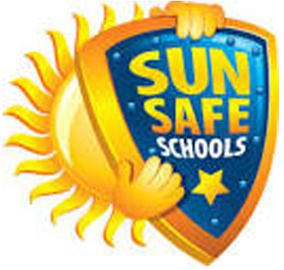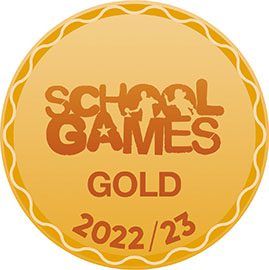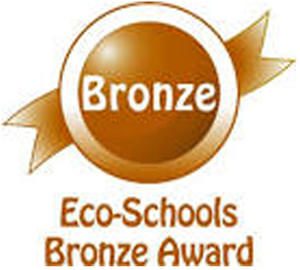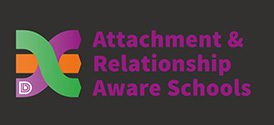
Intent
Science is key to human development; it creates a destination for people to come to and challenge what is known. The chance to think, question and explore. It should have key focus questions, why? What if? Can we improve? Can we change? Does the change make positives or negatives?
It needs to encourage creativity and curiosity so that pupils want to try new things and analyse what they find. Science never stops.
- Living things including humans, plants and animals
- Light and sound
- Electricity
- Forces including magnets
- Earth and space
- Materials and their properties
- Evolution and inheritance
Key concepts
Force – Changing the movement of an object requires a net force to be acting on it. Objects change their velocity of motion only if there is a net force acting on them. Gravity is a universal force of attraction between all objects however large or small, keeping the planets in orbit round the Sun and causing terrestrial objects to fall towards the centre of the Earth.
Organisms require a supply of energy -Organisms require a supply of energy and materials for which they are often dependent on or in competition with other organisms. Food provides materials and energy for organisms to carry out the basic functions of life and to grow. Some plants and bacteria are able to use energy from the Sun to generate complex food molecules. Animals obtain energy by breaking down complex food molecules and are ultimately dependent on green plants for energy. In any ecosystem there is competition among species for the energy and materials they need to live and reproduce.
Animals including humans Pupils should be taught to: identify and name the main parts of the human circulatory system, and describe the functions of the heart, blood vessels and blood. Recognise the impact of diet, exercise, drugs and lifestyle on the way their bodies function, describe the ways in which nutrients and water are transported within animals, including humans.
Light recognise that light appears to travel in straight lines, use the idea that light travels in straight lines to explain that objects are seen because they give out or reflect light into the eye. Explain that we see things because light travels from light sources to our eyes or from light sources to objects and then to our eyes. Use the idea that light travels in straight lines to explain why shadows have the same shape as the objects that cast them.
Electricity Associate the brightness of a lamp or the volume of a buzzer with the number and voltage of cells used in the circuit, compare and give reasons for variations in how components function, including the brightness of bulbs, the loudness of buzzers and the on/off position of switches, use recognised symbols when representing a simple circuit in a diagram.
Implementation
Teachers create a positive attitude to science learning within their classrooms and reinforce an expectation that all children are capable of achieving high standards in science. Our whole school approach to the teaching and learning of science involves the following;
- We build upon the learning and skill development of the previous years. As the children’s knowledge and understanding increases, and they become more proficient in selecting, using scientific equipment, collating and interpreting results, they become increasingly confident in their growing ability to come to conclusions based on real evidence.
- Working Scientifically skills are embedded into lessons to ensure these skills are being developed throughout the children’s school career and new vocabulary and challenging concepts are introduced through direct teaching. This is developed through the years, in keeping with the topics.
- Teachers demonstrate how to use scientific equipment, and the various Working
Scientifically skills in order to embed scientific understanding. Teachers find opportunities to develop children’s understanding of their surroundings by accessing outdoor learning and workshops with experts.
Impact
The successful approach at Springfield results in a fun, engaging, high-quality science education, that provides children with the foundations and knowledge for understanding the world. Our engagement with the local environment ensures that children learn through varied and first hand experiences of the world around them. Frequent, continuous and progressive learning outside the classroom is embedded throughout the science curriculum. Through various workshops, trips and interactions with experts and local charities, children have the understanding that science has changed our lives and that it is vital to the world’s future prosperity.

Intent
Science is key to human development; it creates a destination for people to come to and challenge what is known. The chance to think, question and explore. It should have key focus questions, why? What if? Can we improve? Can we change? Does the change make positives or negatives?
It needs to encourage creativity and curiosity so that pupils want to try new things and analyse what they find. Science never stops.
- Living things including humans, plants and animals
- Light and sound
- Electricity
- Forces including magnets
- Earth and space
- Materials and their properties
- Evolution and inheritance
Key concepts
Force – Changing the movement of an object requires a net force to be acting on it. Objects change their velocity of motion only if there is a net force acting on them. Gravity is a universal force of attraction between all objects however large or small, keeping the planets in orbit round the Sun and causing terrestrial objects to fall towards the centre of the Earth.
Organisms require a supply of energy -Organisms require a supply of energy and materials for which they are often dependent on or in competition with other organisms. Food provides materials and energy for organisms to carry out the basic functions of life and to grow. Some plants and bacteria are able to use energy from the Sun to generate complex food molecules. Animals obtain energy by breaking down complex food molecules and are ultimately dependent on green plants for energy. In any ecosystem there is competition among species for the energy and materials they need to live and reproduce.
Animals including humans Pupils should be taught to: identify and name the main parts of the human circulatory system, and describe the functions of the heart, blood vessels and blood. Recognise the impact of diet, exercise, drugs and lifestyle on the way their bodies function, describe the ways in which nutrients and water are transported within animals, including humans.
Light recognise that light appears to travel in straight lines, use the idea that light travels in straight lines to explain that objects are seen because they give out or reflect light into the eye. Explain that we see things because light travels from light sources to our eyes or from light sources to objects and then to our eyes. Use the idea that light travels in straight lines to explain why shadows have the same shape as the objects that cast them.
Electricity Associate the brightness of a lamp or the volume of a buzzer with the number and voltage of cells used in the circuit, compare and give reasons for variations in how components function, including the brightness of bulbs, the loudness of buzzers and the on/off position of switches, use recognised symbols when representing a simple circuit in a diagram.
Implementation
Teachers create a positive attitude to science learning within their classrooms and reinforce an expectation that all children are capable of achieving high standards in science. Our whole school approach to the teaching and learning of science involves the following;
- We build upon the learning and skill development of the previous years. As the children’s knowledge and understanding increases, and they become more proficient in selecting, using scientific equipment, collating and interpreting results, they become increasingly confident in their growing ability to come to conclusions based on real evidence.
- Working Scientifically skills are embedded into lessons to ensure these skills are being developed throughout the children’s school career and new vocabulary and challenging concepts are introduced through direct teaching. This is developed through the years, in keeping with the topics.
- Teachers demonstrate how to use scientific equipment, and the various Working
Scientifically skills in order to embed scientific understanding. Teachers find opportunities to develop children’s understanding of their surroundings by accessing outdoor learning and workshops with experts.
Impact
The successful approach at Springfield results in a fun, engaging, high-quality science education, that provides children with the foundations and knowledge for understanding the world. Our engagement with the local environment ensures that children learn through varied and first hand experiences of the world around them. Frequent, continuous and progressive learning outside the classroom is embedded throughout the science curriculum. Through various workshops, trips and interactions with experts and local charities, children have the understanding that science has changed our lives and that it is vital to the world’s future prosperity.







